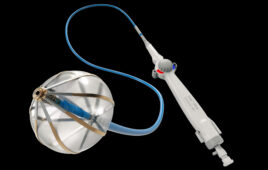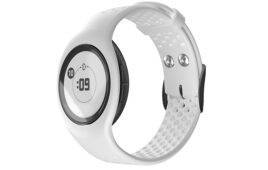 FDA has released new draft guidance on clinical data for medical devices, as part of FDASIA, clarifying how to improve quality, consistency, and transparency of clinical data on the performance of devices for patients in various age, race, and ethnic groups.
FDA has released new draft guidance on clinical data for medical devices, as part of FDASIA, clarifying how to improve quality, consistency, and transparency of clinical data on the performance of devices for patients in various age, race, and ethnic groups.
Objectives of the draft are threefold. First, the document is intended to encourage collection and consideration during the study design stage of relevant age, race, ethnicity, and associated covariates (e.g., body size, biomarkers, bone density) when safety, effectiveness or risk-benefit profile is expected to vary. It also outlines the types of analyses of study subgroup data that should be performed, with appropriate framework for demographics when interpreting overall outcomes. Lastly, it specifies FDA’s expectations for reporting age, race, and ethnicity-specific information in summaries and labeling of approved devices.
The document is a direct response to a 2013 FDASIA report, in which FDA disclosed that of 310 approved PMAs, only 40 percent publicly reported age-based analysis of outcomes, which only 27 percent contained race or ethnicity subgroup analysis, and only 16 percent had public statements regarding race or ethnicity analysis.
Overall, FDA’s goal is to “achieve an unbiased estimate of treatment effect in the general population, sponsors should develop a strategy to enroll diverse populations including representative proportions of relevant age, race, and ethnicity subgroups, which are consistent with the intended use population of the device.”
There are “intrinsic and extrinsic biological differences across age, race, and ethnic groups (e.g. gonad development, skin texture, skin color, hormone levels, metabolism, degenerative disease, bone density, cell receptors, etc.)” that may influence the safety and effectiveness (or probable benefit for HDEs) of a device, FDA notes. And FDA says the lack of research for these populations is “worrisome.”
For age-based research, the proper study of device use in both older and pediatric populations can be critical to success of devices used for those populations. “For example, the use of cochlear implants in certain pediatric subgroups may not be advisable due to the size of the implant, or may be inappropriate due to the stage of the neurological development of the child. In the case of intraocular lenses used to treat vision loss, device use may also improve future visual development in a young child,” FDA adds.
Likewise, for race and ethnicity, FDA says there are “differences in skin structure and physiology,” that can affect dermatologic response in topically applied products. “Mortality rates of patients on dialysis have been shown to differ across race and ethnicity groups,” notes the draft.
The main obstacles that lead to a lack of participation in trials among different age, race and ethnic groups in clinical research can include:
- Inclusion/exclusion criteria which unintentionally exclude different age, race, or ethnic groups (e.g., creatinine levels for African Americans);
- Lack of understanding about differences in disease etiology and pathophysiology may lead to under-diagnosis and under-referral of specific demographic subgroups;
- Patient concerns related to treatment group, randomization, possible side effects, privacy and historical mistrust of clinical trial ethics;
- Language, cultural, and health literacy gaps between investigators and patients;
- Investigator and sponsor avoidance of specific age, race, or ethnic groups of patients due to the perception that it is more difficult and potentially more expensive to recruit and maintain participation;
- Pressure on investigators to quickly enroll patients regardless of demographic characteristics;
- Perceived ethical concerns among investigators regarding enrollment of certain demographic groups in clinical trials;
- Trial logistics (e.g., transportation, childcare) may disproportionately affect specific age, race and ethnic groups’ ability to complete study follow-up visits;
- Disproportionate drop out and lost-to-follow-up rates.
Achieving appropriate enrollment
The draft states that understanding age, race, and ethnicity differences relevant to the clinical evaluation of a device is a first step. Areas such as specific diagnoses, treatment patterns, proportions of people with the target indications, and outcomes related to safety or effectiveness should be explored. Such materials should be included in the study protocol and submission documents.
Sponsors need to consider the goals for a follow-up plan, frequency of scheduled follow-ups, proxy contact information, and number and type of contacts for patients missing a visit. Those follow-up rates should be monitored closely and considered part of the subject accountability data. FDA also suggests engaging in continued interest with participants through a newsletter and other communication to improve and maintain participation rates.
Notes on study design
Because of the potential impact on safety and effectiveness, FDA says that it is important to include variation in data, and that age, race, and ethnic groups be accounted for unless the investigational device is intended for only one group (e.g., neonatal devices). If clinically meaningful subgroups are found, companies should be prepared to explore the need for additional data. If the results of the analysis suggest insufficient data to assess the clinically meaningful differences, FDA may suggest pre- or post-market questions related to safety or efficacy for these subgroups. And, although FDA says it expects this to be rare, in cases where clinically meaningful differences are observed, FDA may request additional studies, implement specific pre- or post-approval study conditions, or recommend modifications to the design of subsequent studies.




